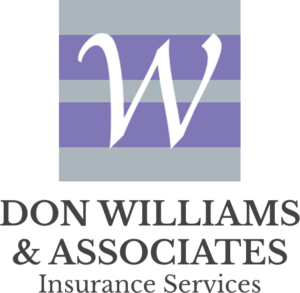What is the workers compensation experience mod, one may ask? The workers compensation experience mod is designed to measure whether a companies workers compensation losses are worse or better than expected.
The base rating for a mod is 1.0, which represents the industry standard for your type of business. If a companies losses are worse than expected they will have a mod higher than 1.0(debit mod), meaning they will pay more in workers comp premium than a business of the same type that has a lower experience mod or even a mod below 1.0(credit mod).
For example, if we have two identical restaurants, they will each have their own mod based on their own loss experience. XYZ restaurant has on ex-mod of .80, which means they will be paying less than the industry standard due to having a better loss history(credit mod). ABC restaurant has had a hard time implementing their employee safety program and has sustained a number of losses over the years. They have an ex-mod of 1.20(debit mod). If the original workers comp premium for both companies was $10,000, XYZ restaurants premium will be modified to $8,000, while ABC restaurant will be paying $12,000.
How is the mod calculated?
The workers compensation experience mod is calculated by the California Workers Comp Insurance Rating Bureau. The workers compensation experience mod takes into consideration the frequency and severity of claims a company has had compared to companies in the same industry with similarly classified employees. Typically, the frequency of losses has a larger impact on the experience mod than the actual size of a companies losses. One large loss will not have as significant of an impact on your mod as 3-4 smaller losses.
Your Ex-mod is based on a three year period starting 4 years before your current policy inception date. So, a companies x-mod for 2020 will include their loss history and payroll for the years of 2016,2017,and 2018, not 2019.
A workers compensation loss consists of two parts. The primary loss threshold, which prior to 2017 accounted for the first $7,000 of a loss. The Excess portion of a loss, which prior to 2017 represented dollars paid out above the $7,000 threshold. California now uses split points, which determine a companies primary loss threshold. Based on your type of business this can mean your primary threshold ranges anywhere from $4,500 to $70,000. It is important to note that the first $250 of every claim is now excluded from the x-mod calculation.
So, if I had a primary loss threshold of $8,000 and incurred a $16,000 loss, I would have a primary loss of $7,750.
To keep this as simple as possible, an x-mod compares your actual losses to your expected losses.
Ap+Ee/E
Ap=Actual Primary Losses: The cost of losses incurred with each loss up to the insureds primary loss threshold.
Ee=Expected Excess Losses: Average losses expected for businesses of similar size and industry in excess of the primary loss threshold.
E=Expected Losses: The total losses expected for businesses in your industry and of similar size.
How do I lower my x-mod?
- The first, and most obvious, thing you can do to lower your workers compensation costs is to reduce workplace accidents. Make sure you have a proper employee safety protocols in place, a return to work policy in place, and proper employee training to avoid any workplace injuries.
- Make sure your insurance policy has all of the correct job classifications and payroll numbers
- Get quotes from a broker that has experience writing workers compensation insurance. An agent from Don Williams & Associates can help find the right policy for your business!
Contact us today at 408-402-3646 for your personalized California Workers Compensation Insurance proposal!

